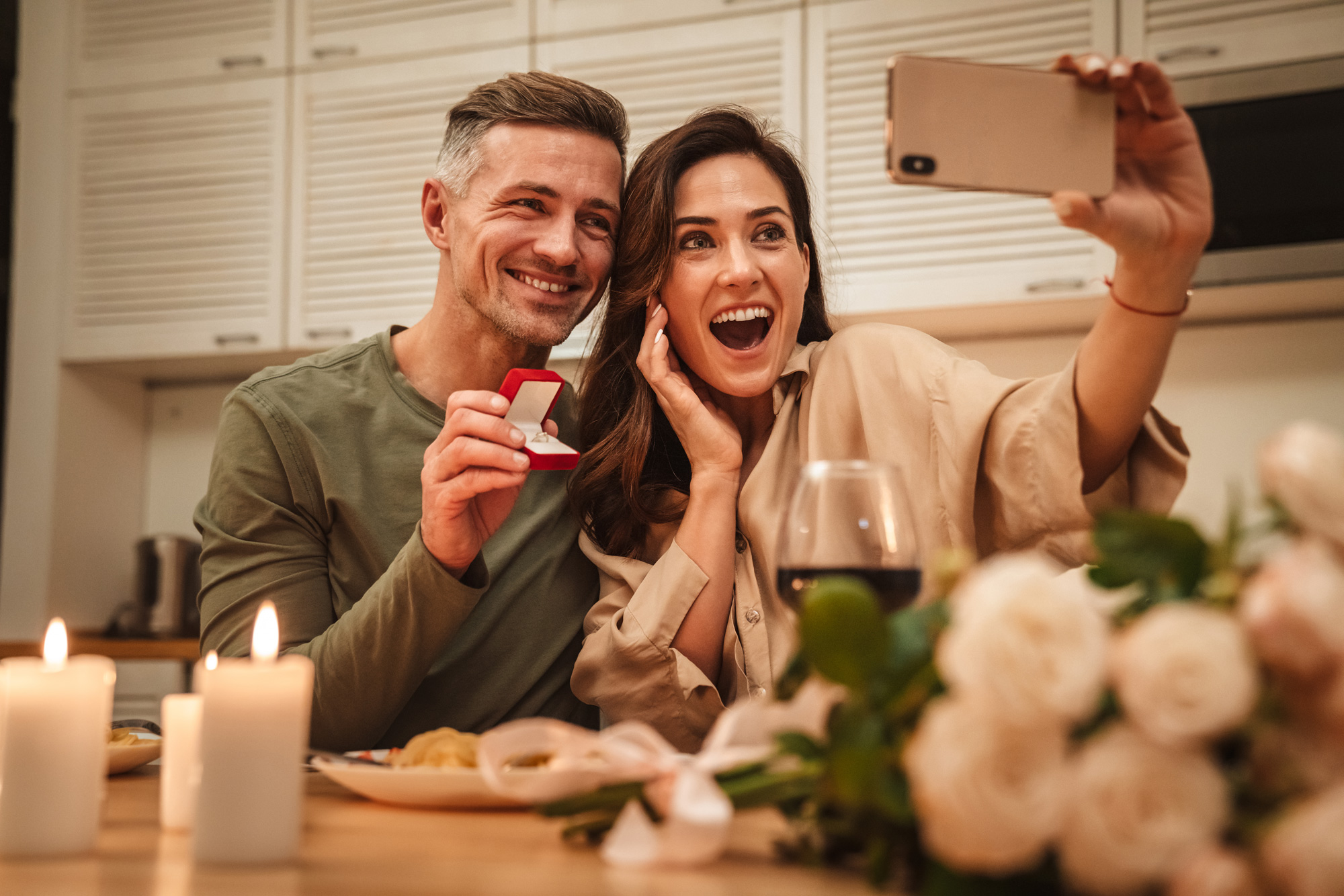Blog archive
How to Design Your Perfect Engagement Ring in 2021

Expected & hoped to be worn for the rest of your life, engagement rings are uniquely precious. They signify the commitment you & your fiancé or fiancée are making to one another, and of course the love that you share. With all that in mind, it’s no surprise then that so many decide to design their own custom engagement rings. Some may do this prior to proposing, while others prefer to get their partners involved and design the ring together. This is a personal choice that’s up to you, and specific to the couple getting married.
Whether you surprise your partner with a one-of-a-kind and irreplaceable ring, or if you prefer to have your beloved assist in the designing, some things remain the same: How you get started, and what information you need to know. In this article we’ll walk you through what important factors to keep in mind, and how to go about designing your own unique & personal engagement ring.
1. How to choose a diamond or precious stone
For most couples, the traditional centrepiece of the engagement ring is a colourless diamond. While this traditional choice is quite common, some couples branch out and look into including various precious stones such as rubies, sapphires, and emeralds into their designs. The other option is to also include coloured diamonds. Quite popular in recent years are pink diamonds, coming in a variety of shades from pale pinks to darker reddish pinks.
When looking at your diamond choices, there are 4 key qualities that go into determining the quality of the stone. Known as the 4 C’s, they are:
- Carat: The is the unit of measurement used when assessing the size of a diamond.
- Clarity: There are two sorts of flaws that are noted when grading a diamond. The first is inclusions, which are internal flaws such as pinpoints & crystals. The other is external flaws called blemishes, examples of which include chips & scratches. The fewer inclusions & blemishes, the higher the clarity.
- Colour: The colour of the diamond can be affected by any chemical impurities present, or defects in the crystal lattice structure. Both of these affect how light passes through a diamond, and will impact how it sparkles. A colour scale is used to grade diamonds, typically ranging from D to J. Grades D to F are considered ‘colourless’ and as a result are more expensive than stones found in grades G to J, described as ‘near colourless.’ The exception to this grading system is the highly sought after coloured diamonds such as pink, red & blue diamonds, where this scale doesn’t apply.
- Cut: Not to be confused with a diamond’s shape, the ‘cut’ refers to a multitude of things including the diamond’s proportions and its finishing. In contrast, the shape refers to the diamond’s outline, for example, oval or pear. Often seen as one of the most important factors, it has the ability to make diamonds appear larger, mask any inclusions, and improve the face up colour.
Keep in mind that even if your budget isn’t particularly large, this doesn’t mean settling for something you aren’t wholly & utterly in love with. Working in tandem with your diamond broker and jeweller will guarantee a diamond engagement ring both you & your partner are in love with, all without breaking the bank.
2. Choosing the band material
After having chosen the perfect stone/s, it’s time to look at materials for the band of your ring. As far as engagement & wedding rings are concerned common choices are gold, both yellow & white. Another popular choice is platinum. Things to consider here are what best suits your skin tone, as well as personal preferences.
3. Deciding on the setting & design
Now that you’ve chosen the ideal band material to go with your perfect stone, we can begin to think about the various ways to set the stone, and what designs work best.
A common setting for engagement rings is the prong setting. Frequently seen, this is where a small metal claw holds your diamond in place. The prongs come in various styles, such as rounded, flat, pointed, and even V-shaped. They are a popular choice amongst couples, as they provide very little obstruction of the diamond.
Another popular choice is the bezel setting. As opposed to using prongs to grasp the diamond, a very thin metal frame surrounds the stone holding it in place.
Using two sides of the band to grip the stone, tension settings give the visual effect of a floating or suspended diamond.
There are many other styles to look into as well, including the minimal & sparkly Tiffany setting, large-looking Halo setting, and the glittery-paved Pavé setting.
Spend some time browsing around to find designs you love, and show these images to your jeweller. Even if it’s a combination of differing elements, these will be useful in getting you the final ideal look you desire. You can also sketch the perfect engagement ring you’re envisaging.
Although you may have come across some engagement ring trends, remember you or your partner will be wearing this ring for decades to come. Be sure to keep the design & style classic and timeless, to prevent it from dating as the years progress.
4. The anticipation, excitement, & waiting for your engagement ring
Once you’ve gone through the entire design process, give yourself plenty of time to be sure you are happy with what you’ve landed on. You will also need to leave time for the ring to be made, as custom designs typically take longer to make. Planning ahead is key to ensuring it’s ready for the proposal.
It’s not every day that you get to design such a uniquely special & personal symbol of your love. Be sure to take your time, and enjoy the process. Don’t feel rushed, and make sure to enjoy every step of the journey.
If you would like some help designing the perfect custom engagement ring for your proposal, send us a message with your details, budget, and relationship history and we can help build the perfect engagement ring to signify your love. Alternatively, we have a tool to help you build your own ring so you can get started right away and design a ring to give you that, “YES!”



